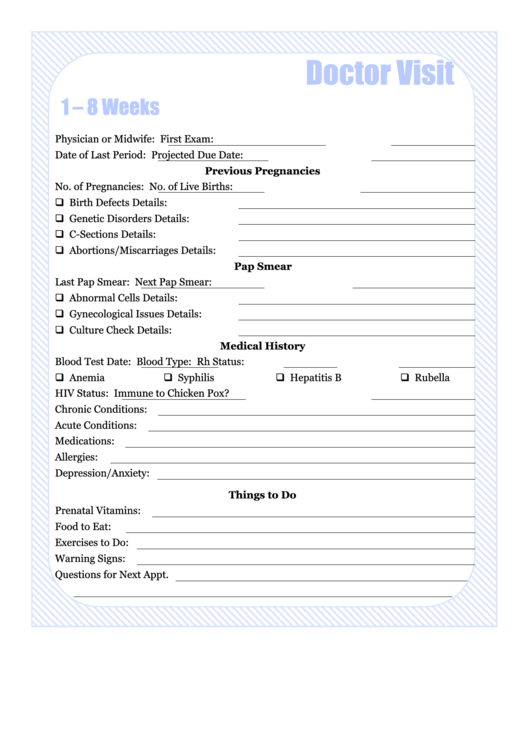
The insurance system is also endlessly confusing, says Dr. patients pay more out of pocket for health care than people in other wealthy, developed countries, most of which offer some form of universal health coverage. health care without talking about insurance. It’s impossible to explain problems with U.S. “We should all be honest,” she says, “about the fact that health care has been slowly imploding for a period of time.” A lot of times they don’t engage the patient, and the patient wants to be engaged,” Arnetz says.īut these problems didn’t start with the pandemic, says Lori Knutson, executive director of the Whole Health Institute, a nonprofit focused on improving health care delivery. “Providers feel stressed, burned out, less empathetic.
#3 MONTHS FOR FIRST TIME DOCTOR VISIT HOW TO#
Bengt Arnetz, a professor at the Michigan State University College of Human Medicine who researches how to improve primary care. Physician burnout only adds to patient burnout, says Dr. physicians said they felt burned out in late 2022, and about as many said they’d considered leaving the profession in the previous six months. According to one recent survey, 30% of U.S. It’s pushed nearly every element of medical care to the brink and prompted some providers to leave the profession entirely, worsening existing personnel shortages and contributing to an epidemic of physician burnout. The pandemic certainly hasn’t improved bedside manner. Even small gestures, like making eye contact with or leaning toward a patient as they speak, can help build a strong rapport, Taber says. “Patients won’t necessarily want to go back to doctors they don’t like,” she says. But, she argues, they aren’t always as good at preparing students to be doctors, with all the interpersonal complexity that entails. medical schools do an excellent job of teaching students how to practice medicine. Part of the problem may go back to the way doctors are trained, says Jennifer Taber, an associate professor of psychological sciences at Kent State University and a co-author of the 2015 study on doctor avoidance. “I wish we could see our vet instead, because they really spend a lot of time” with their patients, she says. She struggles to square the $400 her family pays in monthly insurance costs with what she characterizes as a rushed and underwhelming care experience that pales in comparison with the attention her pets get at the veterinarian. Jen Russon, a 48-year-old English teacher and mother of two from Florida, says she can’t remember a single positive experience she’s had with a doctor. People of color, women, and people who are overweight frequently report feeling mistreated by their doctors. Many people also skipped appointments during the COVID-19 pandemic, largely because of office closures and fears of the virus-but one study found that people were more likely to forgo doctor’s visits during the pandemic if they’d had previous poor experiences with health care. A third of participants in one 2015 study said they had avoided going to the doctor because they found it unpleasant, citing factors like rude or inattentive providers, long wait times, and difficulty finding a convenient appointment. adults to delay or go without medical care. Research shows that during the past year, financial strain caused about 40% of U.S. There are many barriers: it can take weeks to get an appointment, particularly in more rural areas where fewer doctors practice, and visits can be costly even for people with insurance. Yet about a quarter of American adults don’t have a primary-care provider, and, as of 2021, almost 20% hadn’t seen any doctor during the past year. While experts debate whether everyone needs a checkup each year, studies show that on balance, patients who regularly see a physician tend to be healthier and live longer than those who don’t. In theory, patients get annual physicals so doctors can assess their overall health and detect any red flags (or refer them to specialists who can) before those warning signs become full-blown chronic disease. Primary care is supposed to be the bedrock of the U.S. That could dissuade them from getting medical care at all-and if that happens, America may get a whole lot sicker than it already is. They’re tired of providers who treat them like electronic health record entries, rather than people.

They’re tired of high prices and surprise bills. patients are tired of waiting weeks or months for appointments that are over in minutes. About 10% of the population doesn’t have health insurance.Īnd the customer service sucks. than in other wealthy nations, and about 60% of U.S.

Average life expectancy is lower in the U.S. spends more per capita on health care than any other developed country in the world but has subpar health outcomes.

Americans pay a premium for the care they rate so poorly.


 0 kommentar(er)
0 kommentar(er)
